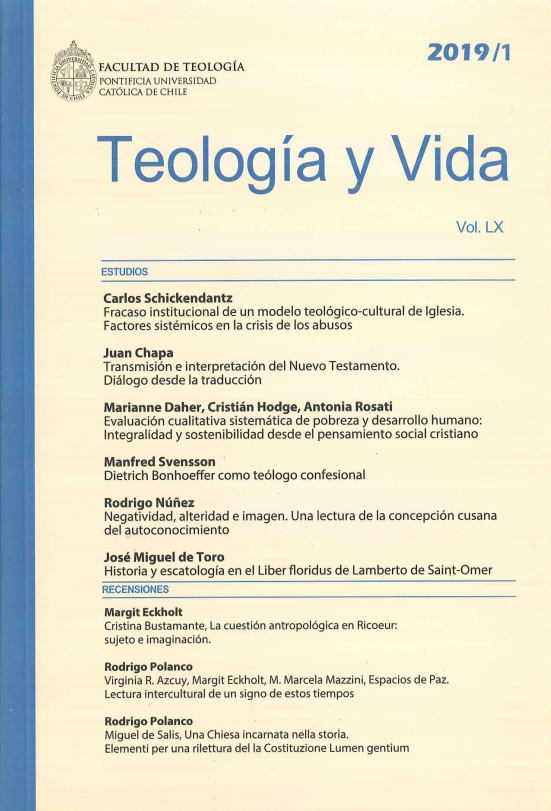Transmisión e interpretación del Nuevo Testamento. Diálogo desde la traducción
Contenido principal del artículo
Resumen
Resumen: Uno de los riesgos del quehacer teológico es querer “domesticar” el texto bíblico, asumiendo inconscientemente que disponemos de los autógrafos originales. El método histórico-crítico y en concreto la crítica textual como su punto de partida sirve de recordatorio permanente para evitar caer en esa trampa. La “Nueva Filología”, la cultura manuscrita y las nuevas aproximaciones a la crítica textual neotestamentaria muestran que ante la imposibilidad de alcanzar el texto original necesitamos de cada uno de los manuscritos como testimonios de un texto “siempre vivo”. Las traducciones latinas son un ejemplo de esta vitalidad. Manifiestan cómo el texto escapa todo reduccionismo y no es separable de la comunidad de fe en que ha nacido.
Palabras claves: Nuevo Testamento; Nueva Filología; Crítica textual; Traducciones latinas.
Abstract: One of the risks of the theologian is the desire of “domesticating” the biblical text, assuming unconsciously that we have the original autographs. The historical-critical method and, specifically, textual criticism as its starting point, functions as a permanent reminder to avoid falling into this trap. The “New Philology”, the culture manuscript and the new approaches to New Testament textual criticism show that in the impossibility of reaching the original text we need to analyse each of the manuscripts as testimonies of a “living text”. Latin translations are an example of this vitality. They manifest how the text escapes reductionism and cannot be separated from the community of faith in which it is born.
Keywords: New Testament; New Philology; Textual Criticism; Latin Translations.
Descargas
Detalles del artículo

Esta obra está bajo una licencia internacional Creative Commons Atribución-NoComercial-SinDerivadas 4.0.
Los autores de artículos aceptados en Teología y Vida conservan los derechos de propiedad intelectual sobre sus trabajos y otorgan a la revista los permisos de distribución y comunicación pública de los mismos, consintiendo que se publiquen bajo una licencia Creative Commons (BY-NC-ND) 4.0 Internacional, que se otorga por todo el plazo de protección de la obra y con un carácter no exclusivo. La única limitación para el autor es que sólo podrá otorgar licencias no exclusivas sobre su obra. Esta licencia no permite la generación de obras derivadas ni hacer un uso comercial de la obra original, es decir, sólo son posibles los usos y finalidad que no tengan carácter comercial.
Se recomienda a los autores publicar su trabajo en Internet (por ejemplo en páginas institucionales o personales, repositorios, etc.) respetando las condiciones de esta licencia y citando debidamente la fuente original.

